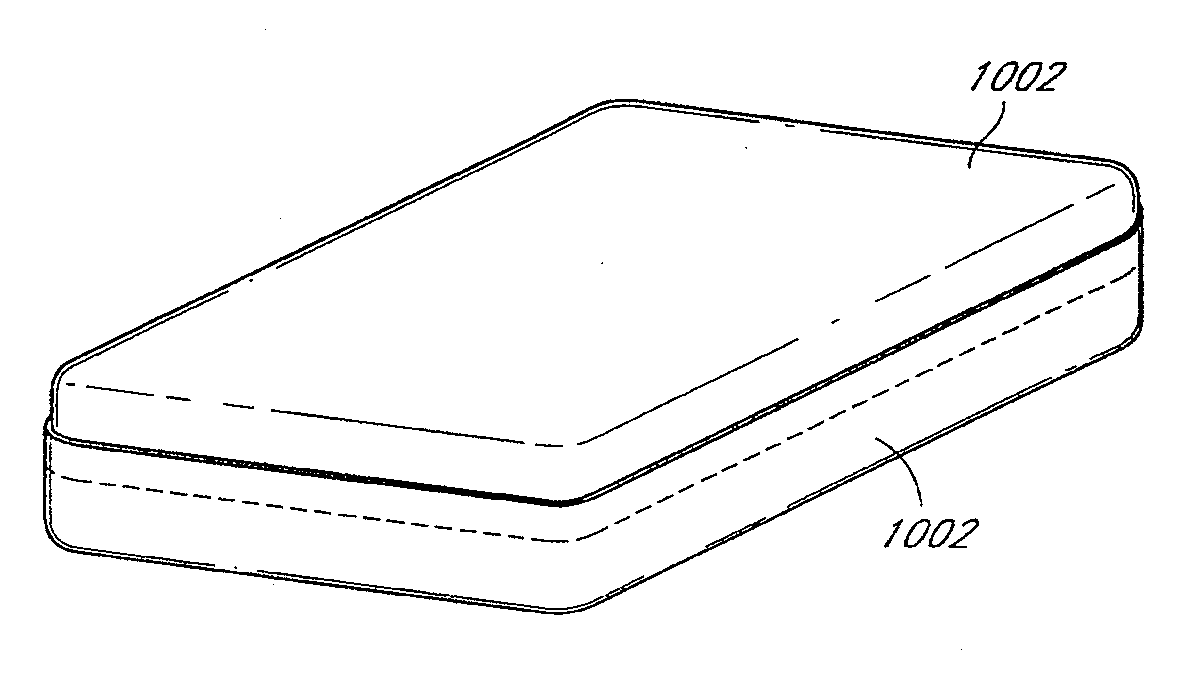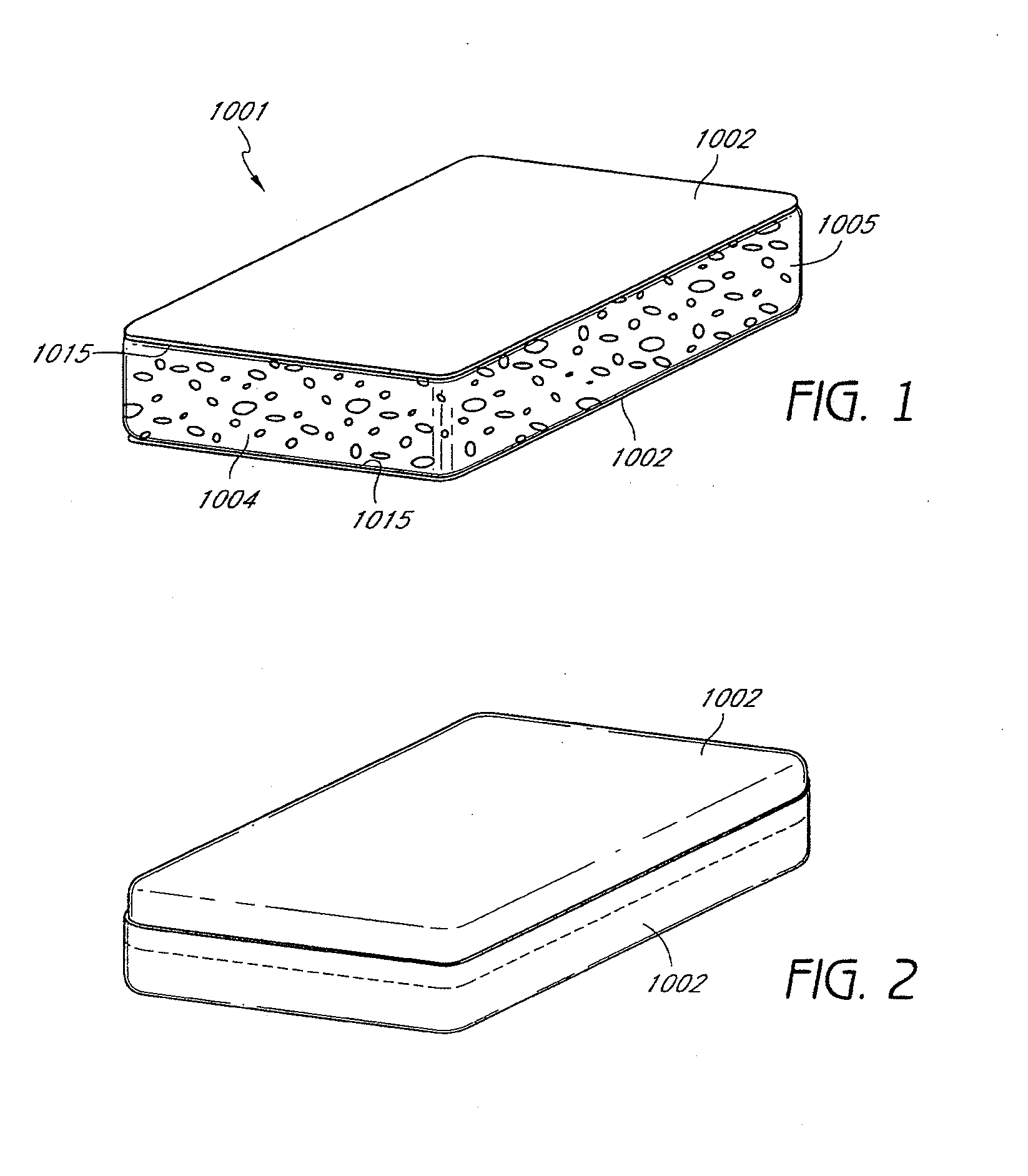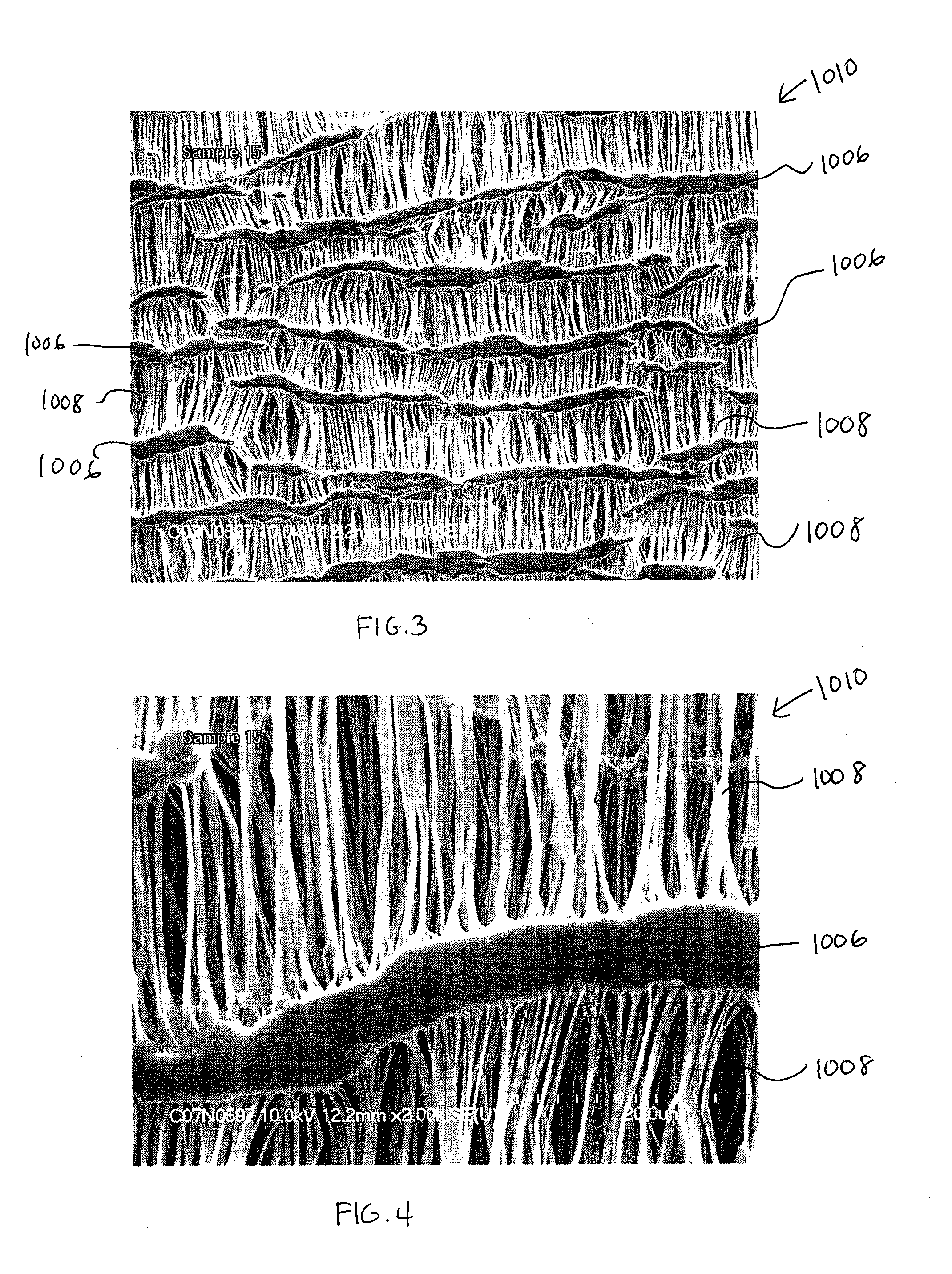Porous implant with effective extensibility and methods of forming an implant
a technology of extensibility and porous implants, applied in the field of porous implants with effective extensibility and methods of forming implants, can solve the problems of relative rigidity and inelasticity in one or more directions of eptfe, and achieve the effects of reducing the length of the eptfe layer, smooth surface, and reducing the distance between the nodes
- Summary
- Abstract
- Description
- Claims
- Application Information
AI Technical Summary
Benefits of technology
Problems solved by technology
Method used
Image
Examples
Embodiment Construction
[0094]Referring to FIG. 1, disclosed is one embodiment of an implant 1001. The implant 1000 includes two layers of ePTFE 1002 which cover an inner element 1004. The ePTFE layer 1002 forms an outer layer which is exposed to native tissue. As such, the ePTFE layer 1002 provides desirable properties such as tissue ingrowth and biocompatibility. The implant 1001 may be shaped in any suitable manner depending upon the part of the body in which the implant 1001 is being used.
[0095]The inner element 1004 may be a porous and / or permeable material made of any suitable material such as an open cell silicone. Open cell structures and other features that can be used or modified for use with the implants and methods of use herein are described, for example, in U.S. patent application Ser. No. 12 / 024,835, filed Feb. 1, 2008 and hereby incorporated by reference in its entirety, particularly at FIGS. 1-31 and the accompanying description at paragraphs [0046] to [0061]. Furthermore, various features...
PUM
 Login to View More
Login to View More Abstract
Description
Claims
Application Information
 Login to View More
Login to View More - R&D
- Intellectual Property
- Life Sciences
- Materials
- Tech Scout
- Unparalleled Data Quality
- Higher Quality Content
- 60% Fewer Hallucinations
Browse by: Latest US Patents, China's latest patents, Technical Efficacy Thesaurus, Application Domain, Technology Topic, Popular Technical Reports.
© 2025 PatSnap. All rights reserved.Legal|Privacy policy|Modern Slavery Act Transparency Statement|Sitemap|About US| Contact US: help@patsnap.com



